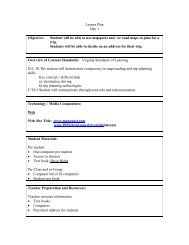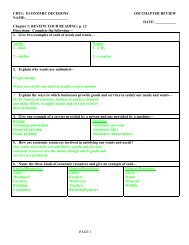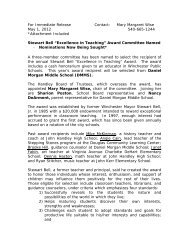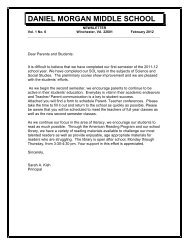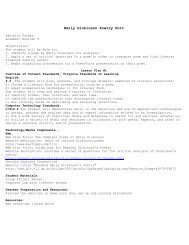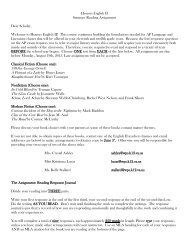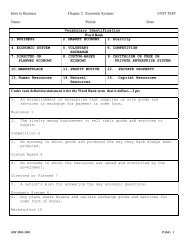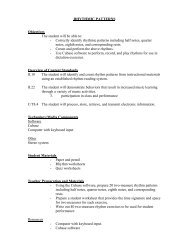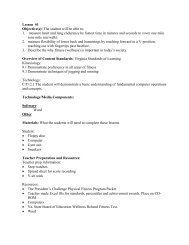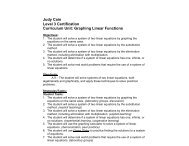Science Study Guide â Life Cycles and Plants (2.4 and 2.8)
Science Study Guide â Life Cycles and Plants (2.4 and 2.8)
Science Study Guide â Life Cycles and Plants (2.4 and 2.8)
Create successful ePaper yourself
Turn your PDF publications into a flip-book with our unique Google optimized e-Paper software.
<strong>Science</strong> <strong>Study</strong> <strong>Guide</strong> – <strong>Life</strong> <strong>Cycles</strong> <strong>and</strong> <strong>Plants</strong><br />
(<strong>2.4</strong> <strong>and</strong> <strong>2.8</strong>)<br />
During life, plants <strong>and</strong> animals go through a series of orderly changes.<br />
These changes occur over time <strong>and</strong> happen in cycles.<br />
Some animals (but not all) resemble their parents from birth to adult-hood, others<br />
go through different life stages.<br />
You should be able to draw <strong>and</strong> describe the life cycles of deer, butterflies <strong>and</strong><br />
flowering plants <strong>and</strong> to compare these to each other.<br />
<br />
<strong>Life</strong> Cycle of a White-Tailed Deer<br />
<br />
<br />
<br />
<br />
<br />
When they are born they<br />
look very similar to an adult<br />
deer.<br />
A young deer is called a<br />
fawn. These have white<br />
spots on them to help<br />
camouflage them.<br />
Then they are called<br />
yearlings.<br />
An adult male deer is called<br />
a buck.<br />
An adult female deer is<br />
called a doe.<br />
<strong>Life</strong> Cycle of a BUTTERFLY<br />
Pupa<br />
Larva<br />
Include in your description: eggs, larva (caterpillar), pupa (chrysalis), adult
<strong>Life</strong> Cycle of a FLOWERING PLANT<br />
Include in your descriptions: seed, grows roots, grows stem, grows leaves, grows<br />
flowers, flowers make seeds (often in fruits)<br />
<br />
<br />
<br />
<br />
<br />
<br />
<br />
<strong>Plants</strong> provide homes <strong>and</strong> food for many animals.<br />
<strong>Plants</strong> help to prevent soil erosion.<br />
<strong>Plants</strong> provide many useful products <strong>and</strong> materials that humans <strong>and</strong> other living<br />
things use.<br />
<strong>Plants</strong> make Oxygen <strong>and</strong> food.<br />
Some plants only grow in certain places <strong>and</strong> climates <strong>and</strong> so people <strong>and</strong> animals<br />
adapt to what plants are able to grow in that area.<br />
Some products made from plants include fiber, cotton, oil, spices, lumber, rubber,<br />
medicines <strong>and</strong> paper.<br />
Products made from plants that are grown in Virginia include: wood, fruits, <strong>and</strong><br />
vegetables.<br />
You should also be able to classify plants by how they are used <strong>and</strong> eaten by humans<br />
<strong>and</strong> animals.



